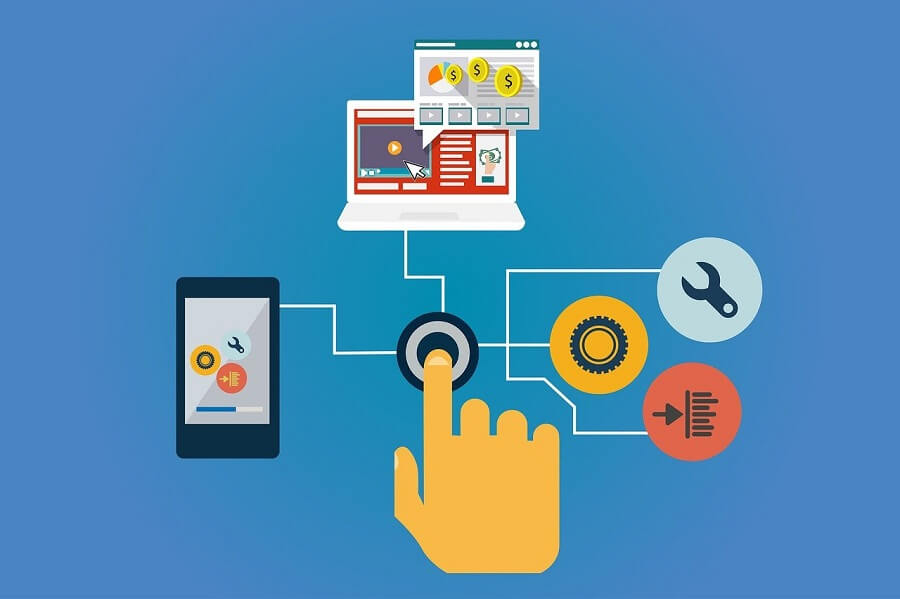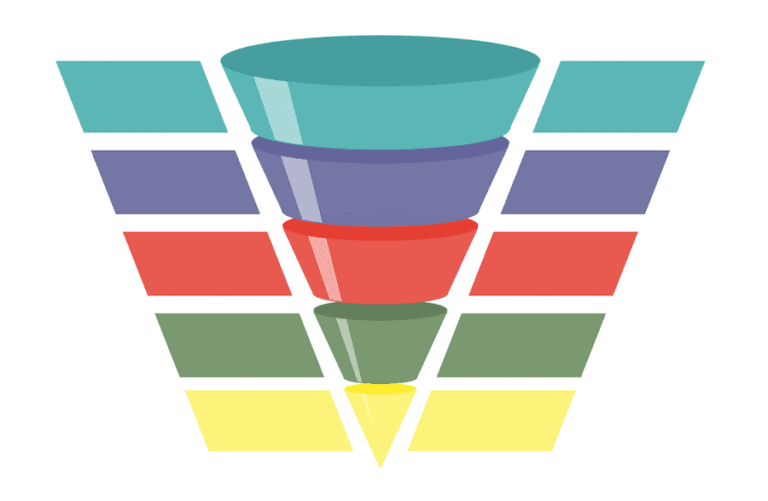Upselling, downselling, and cross-selling are essential sales techniques, and if they are used strategically can increase profitability and take your business to the next level.
All big organizations, including Amazon, Apple, Tesla, etc., use these techniques to help buyers buy the right products and increase sales.
You must use these techniques to grow your business if you sell any product or service.
Upselling
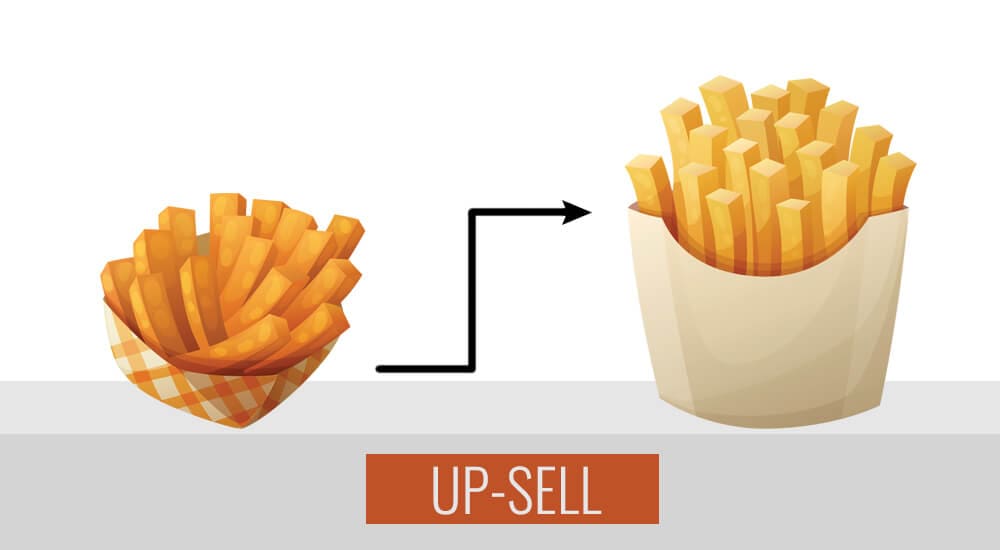
Upselling helps you sell customers a more expensive product version than they will buy. For example, if a customer purchases a basic model for a product, you can offer them an advanced version of the product or a more expensive featured product.
According to this survey, the probability of selling to an existing customer is 60% to 70%, while selling to new customers has a 5-20% probability.
Upselling works well when you educate customers about the upgraded offer, show comparisons, and explain what they are missing and how these features can help them achieve their goals.
When to Use Upselling
- When a buyer is about to purchase.
- When you have a better product.
You can use upselling before the purchase, during the purchase, or after the purchase.
Upselling Examples
- While buying a phone, you get an offer for an upgraded version.
- While ordering food at restaurants, you are given a choice to add dessert.
- While buying software for yourself, you can buy for the family at a lower price than a premium version.
You must be very careful while upselling. I have seen many marketers offer more than one product in upselling, confusing the buyer. Please don’t show your entire store to visitors who have browsed it and decided to buy a product.
You should select upsell offers carefully. They must be relevant and not too expensive. A general rule is offering something 25% to 35% expensive.
Also, avoid being pushy and focus on customer needs.
Downselling
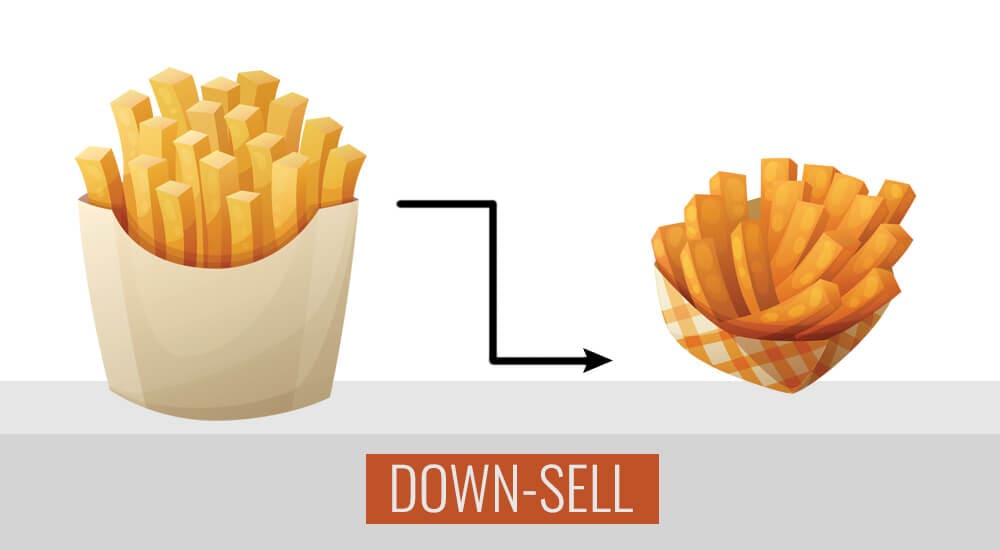
Downselling is the opposite of upselling. If customers are uninterested in buying, you will offer them a cheaper alternative.
When a customer does not purchase the product and is about to leave, you offer them a basic version at a lower price.
This increases the chance of converting a visitor to a buyer.
When to Use Downselling
- When the customer is walking away.
- When you have a basic version of the product.
Downselling Examples
- Offer a cheaper product.
- As the visitor is about to leave, you offer a discount.
- You offer a one-time offer to buy a package deal at a lower price.
- Free shipping
Many marketers argue that downselling reduces profit and affects the brand, but this is untrue. You are letting customers taste your product by offering a more basic product; if they are happy with it, they will buy again.
You are not losing anything; instead, you are getting a high-quality lead who has already converted.
A few months back, I landed on the Kartra site while reviewing sales funnel platforms. Since I did not find a free trial, I was about to leave the site, and they showed me the following offer:
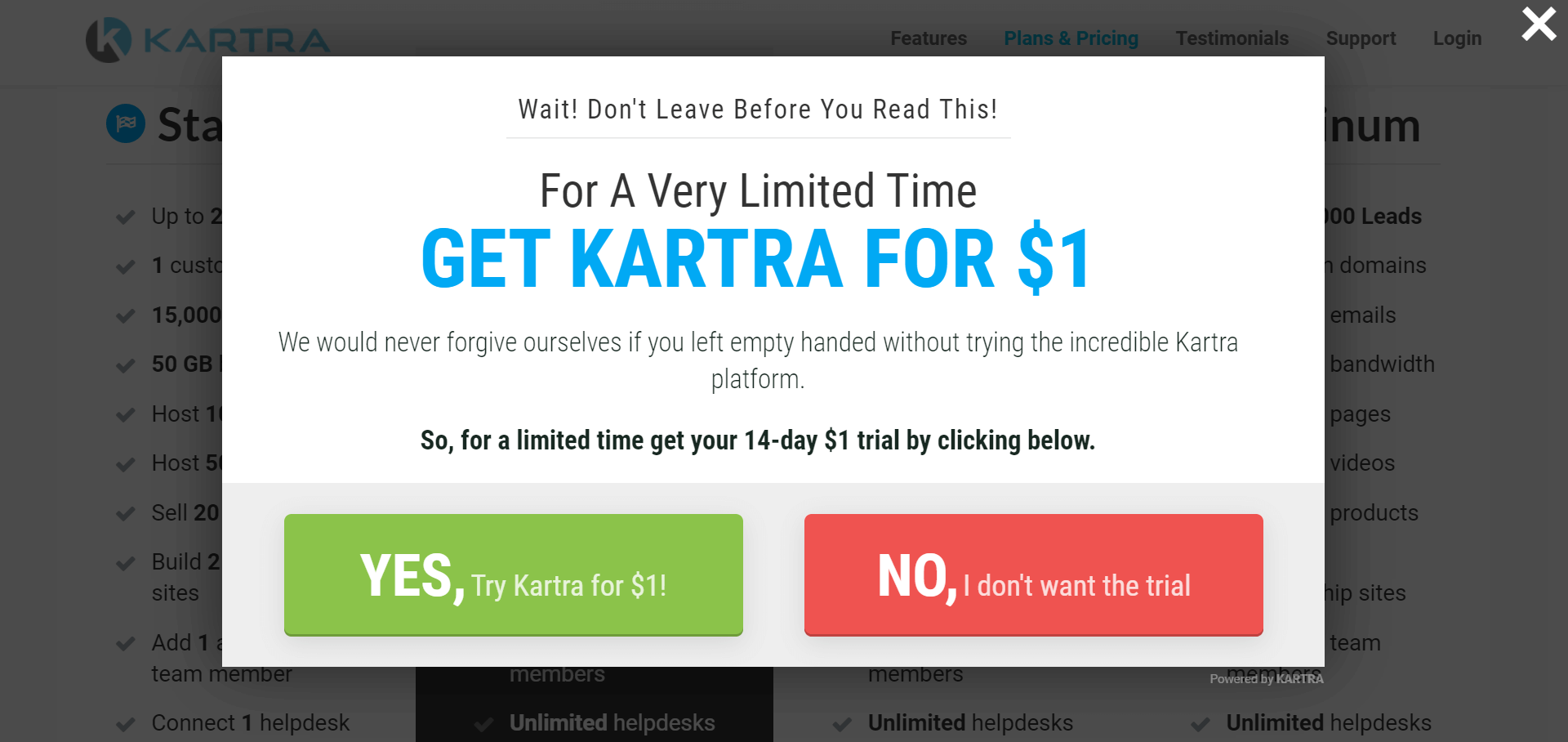
And I ended up signing up. Afterward, they started upselling me their regular plan through email marketing.
It was a good strategy that made me their customer.
However, with downselling, you have to be careful. You must not show your customer a downsell offer while browsing or during the checkout process. Show your downgraded offer when the visitor is about to leave your site.
These days all landing page builders or lead generation tools offer this feature; they call it exit intent.
You should avoid offering a heavy discount on your downselling.
It will hurt your sales in the long run and affect your brand. It will undervalue your product as you train your buyers to wait for a heavy discount to make a purchase.
A good strategy can be a reasonable discount for the next purchase. Offering discounts on the primary product is not downselling.
You can also use downselling for visitors who abandoned their carts. You can track such visitors and email them to buy the same product. If they don’t take action, you can offer a lower-grade product.
Email marketing can be an effective tool for downselling.
Cross-selling
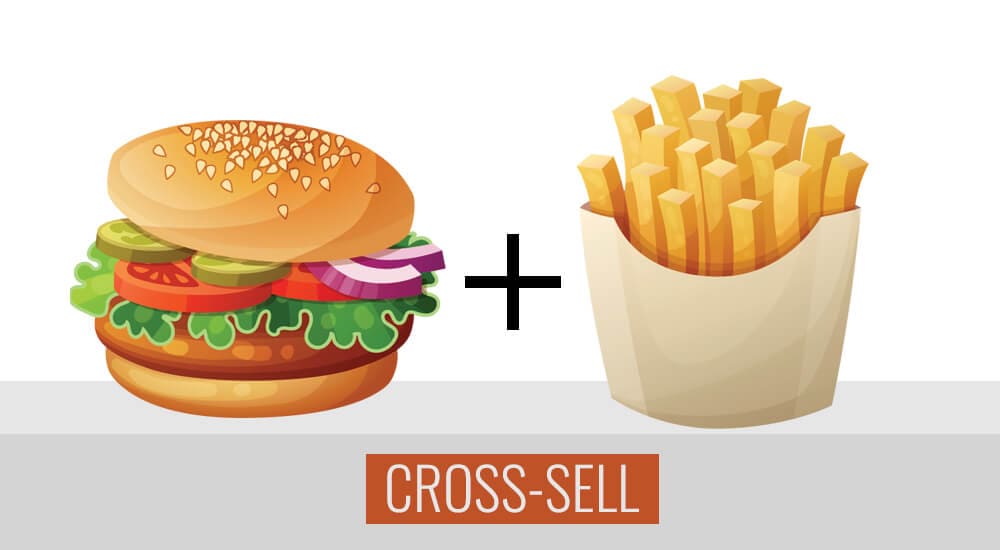
Now we come to cross-selling.
Cross-selling is about selling a product related to something your customer has bought. For example, you can offer a mobile case or mobile warranty if someone has purchased a mobile phone.
The warranty is the most common cross-sell. Here, at a lower price, you will offer a guarantee to customers.
Cross-selling is different from upselling and downselling.
In upselling and downselling, you try to sell the high-end or low-end version of the product that a customer showed an interest in. No purchase has already happened in upselling and downselling; you are trying to make the sale.
While in cross-selling, you are offering customers to buy a different product or service after the customer has made the purchase.
According to some research, a simple recommendation will increase the chance of further purchase. Amazon has reported that upselling and cross-selling were responsible for 35% of its revenue.
Cross-selling points buyers to another product offer with a special price that can benefit the customer. Often, you show it immediately after purchase.
When to Use Cross-sell
- The customer has made a purchase
Cross-selling Examples
- A complimentary product.
- Bundle package.
- Extended warranty.
- Frequently bought together items.
Benefits of Upselling, Downselling, and Cross-selling
The benefit of upselling is evident. You are selling a high-end product instead of a basic version. Your profits will be higher.
You also get profit with downselling.
The customer was not interested in your offer and was about to leave. You offered them a lower-priced product, and they purchased it. You get something instead of nothing.
Although the profit is lower, you sold your brand name. If customers are happy, they will become a repeat customer.
You must use these techniques to increase sales. Using them these days is a matter of a few clicks. All sales funnel platforms, shopping cart software, etc., provide these features natively. Just make sure your offer is attractive and useful to your buyer.
Summary
The profit is in repeat sales. Upselling, downselling, and cross-selling can increase your profits, brand recognition, and loyalty. Please don’t overdo it, and avoid using gimmicks. Ensure that the offered product is related to the original product; suggesting a new product will only annoy your customers.
Make sure your offers provide value to your customer.
These techniques are useful for buyers and sellers. Buyers get more value for their money, and sellers get profits.
It also helps buyers be aware of your other products and thus increases the chances of repeat sales.
How are you using upselling, downselling, and cross-selling in your sales funnel? Please share it in the comments section.

